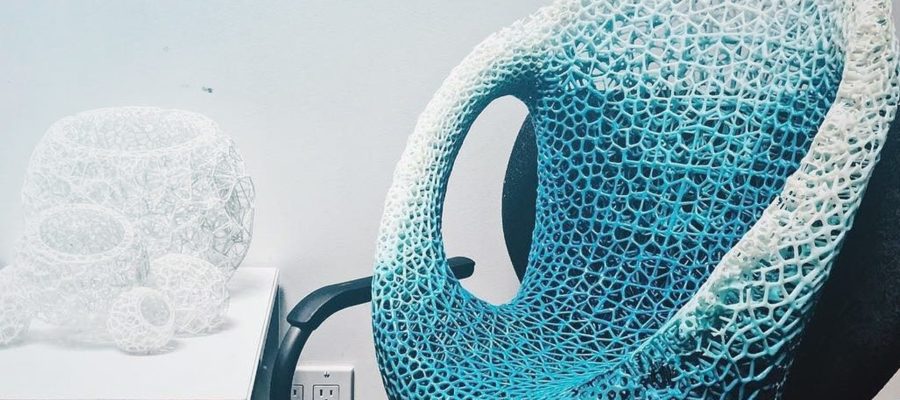Pushing the Limits of 3D Printing with Alvin Huang
Architecture
Alvin Huang is known professionally with multiple titles such as designer, architect, inventor, and educator. Recently his work in 3D printing has captured the attention of the industry with creative mind and problem-solving abilities. Named the “Durotaxis Chair”, Huang set out to build a fully 3D printed rocking chair in 2014 inspired by the microscopic cellular structure that the design emulates. His challenge was to build a piece that could only be possible with additive manufacturing, and that could take advantage of some of the gradient stiffness properties of new Stratasys materials. The final product is a stunning testament to the innovative power of 3D printing technology, generative design, and material properties.

The Durotaxis Chair combines a cutting edge mesh with classic ergonomics and functionality but initial prints wasted about 75% of the material for support to achieve the chair’s unique geometries. To combat this, Huang explored how steep of an angle he could print in an effort to use as little support as possible. Most 3D printers max out at a 70º overhang before the structure begins to fail but Huang was able to reengineer his model to push upwards of 75º or even 80º overhangs by controlling its thickness.
The Bespoke Lamp
After experimenting with overhang limitations, Alvin Huang took his findings to create a bespoke lamp where he would attempt to fit as many small complex geometries into one space as possible. The result was a creation dubbed “La Burbuja”, an 18-part luminaire that contains over 1200 virtual bubbles surrounding a single light source. Huang was able to create a visually exciting maze of internal geometries that fit together as a cohesive sphere without the need for any waste material and the need for post-production processes. He describes his creation as “proto-architecture” as they represent individual objects but also explore much larger architectural ideas and designs.

To learn more about additive manufacturing and what you can build with Stratasys’ 3D printing materials, feel free to contact us with any questions.

